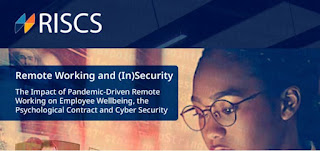The Rise of the Cyber Women: Amy Ertan
From personal stories of development to advice on entering the industry, the book provides inspirational accounts of determination and real-life career navigation in the field. CDT student Amy Ertan authored a chapter on ‘Postgraduate Study in Cyber Security’ to provide an informative and candid account on the journey through academia.
The Book Itself: Last month ‘The Rise of the Cyber Women’ volume one was released: a compendium of personal accounts of career progression into the field. The book features stories from around the world and does not hold back in articulating the struggles that the authors have often faced, and the tenacity that they have shown. From studying for Security+ alongside single parenting, to escaping abusive relationships, to then facing discrimination in their professional lives, the narratives highlight how human the journey into cybersecurity can be. The authors of this book make it clear that cyber security is much more than a pay-check. For many, working in security and privacy is a way to make the world a better place – to protect those within society from insecurity. I have had the privilege of reading my fellow authors’ chapters and was inspired both by their willingness to be open about their experiences, and their passion for helping the next generation of talent (including both school-age talent entering the workforce and experienced colleagues who are looking to transition from other domains into cybersecurity). The book is testament to the fact that there is no single route into cyber security, and the evidence runs throughout chapters of how colleagues with backgrounds in law, politics, marketing, recruitment, or engineering can progress on to pioneer change across the cybersecurity industry.
Postgraduate Study in Cyber Security. My chapter aims to increase the accessibility of information to those considering academia. Before I applied for Royal Holloway’s CDT programme, I had assumed a PhD in cybersecurity was out of my reach – both financially and in intellectual terms. I did not know PhDs could be funded (and indeed, most of my non-academic network are surprised when I mention that researchers have a stipend) and I also did not know that for centres for doctoral training, appropriate work experience and developed research interests could be as useful as a master’s degree (which I lacked). Knowing almost no-one doing PhDs, and no-one in information security, I took the risk to convert from finance to information security through my doctoral programme - and am delighted I did! Since starting at Royal Holloway, I have received many LinkedIn messages, and received many questions in person, from individuals that remind me of my old self: passionate about studying information security but concerned at making such a large life decision with very little information. My chapter is designed to be as candid and clear as possible in addressing the facts I believe every applicant should consider: why to pursue – or not pursue – a postgraduate qualification in cyber security, aspects to consider when choosing a programme, and finally, my reflections on the journey through academia to date. I reflect on being a woman in the field and offer my advice on combating imposter syndrome and finding communities that support your interests. I hope it is helpful to those who resonate with the feeling with feelings of imposter syndrome, and also hope the chapter provides assurance to women worried about being discriminated against in an environment where they will often be underrepresented.
Conclusion. It has been a pleasure to become a part of the information security community over the last few years – both in terms of the academic community across the UK, and through online industry communities across Twitter and LinkedIn. This book offers a window into the community for those who have yet to make their first step into networking in the space. It also provides a reminder to everyone already in cybersecurity that success relies on a series of personal journeys. Every contributor to this book has pledged to make the path easier for those who came after them. I hope this sentiment is echoed by colleagues across the board; in a field in which the skills-gap is only due to become more pronounced, it is more important than ever that we encourage everyone with the potential to join the field.
The book was compiled by Lisa Ventura and features contributions from: Lauren Zink, Goonjeta Malhotra, Liz Banbury, April Boyd-Noronha, Cheryl Torano,Celine Pypaert, Quratulann Jamshed, Lucy McGrother, Semire Yekta, Jihana B, Stephanie Luangraj, Vandana Verma, Larisa Gabudeanu, Amy Ertan, Kavya Pearlmant, and Karla Reffold.
 The Rise of the Cyber Women: Volume One is available from Amazon (paperback and kindle).
The Rise of the Cyber Women: Volume One is available from Amazon (paperback and kindle).


Comments
Post a Comment